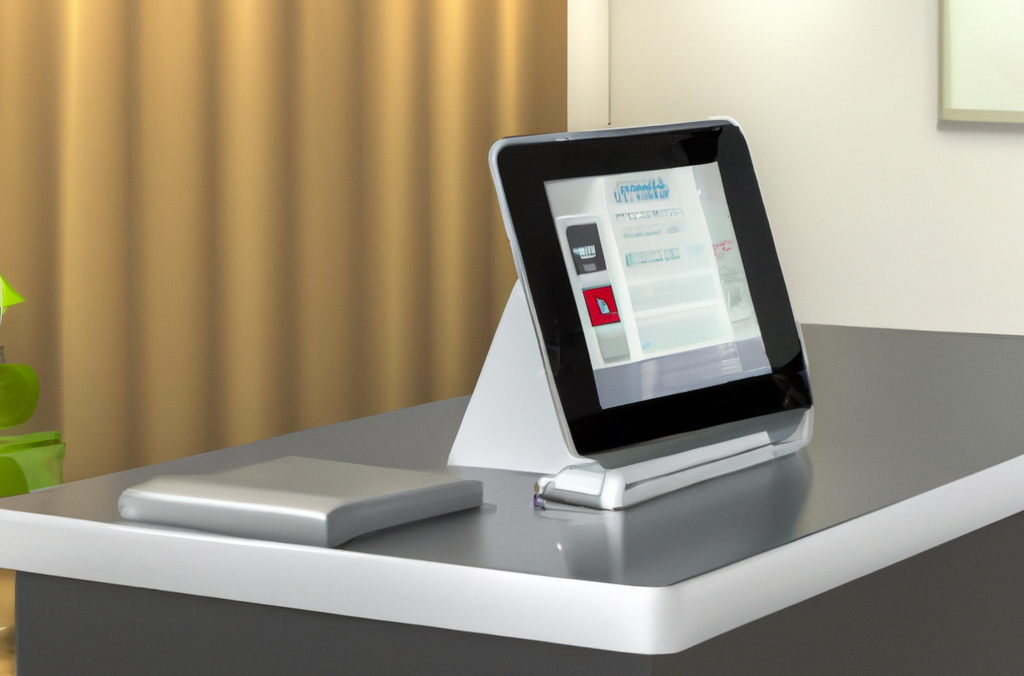Visitor management is an often overlooked part of running an efficient, productive organization. Many workplaces have an assumption that employees will just deal with visitors in an appropriate manner. However, there are many benefits to having some guidelines and recommended procedures in place for how to deal with visitors, and many real problems can be avoided by effective visitor management.
Who Are Visitors?
 (A.K.A. Why you should care about visitor management)
(A.K.A. Why you should care about visitor management)
Part of why some organizations neglect visitor management is because they have a poor definition of visitors/guests. If they aren’t a hotel or a hospital, they think they don’t have any visitors. They’re wrong.
A visitor is any person entering your workspace who does not work in your organization. Period. Thus a visitor could be someone as innocuous as the pizza delivery person or as important as a bigwig investor or the president of the company – who works in another building across the world – coming for a meeting.
A not-at-all comprehensive list of visitors would include:
- Vendor representatives
- Job candidates
- Customers/clients
- Event attendees
- Potential members – for places like coworking organizations, fitness centers, country clubs and more
- Family of employees
- Delivery people
- So many more
Your organization has a stake in how every one of these people are treated when they walk through your door. Each one is a relationship that can and should be built and nurtured. Use your visitor management to its fullest potential in order to do exactly that.
Show Yourself Off
Visitor management is part of your brand identity. Ask yourself:
- What do we want visitors to see when they enter our organization?
- What do we want them to feel?
- Who do we want to meet or greet?
- How should they be greeted?
We’re going to take a wild guess that you did NOT answer that you wanted visitors to see a junky pile of boxes, feel completely lost, be greeted by whatever random person walks by or be greeted rudely.
A well-planned visitor management system ensures that your guests’ first impression is a good one. Given that people make snap judgments within just a few seconds, it is important to think about what you want that judgment to be. When you take the time to tailor your guests’ first experiences with your organization, it can deliver dividends.
Imagine a guest who approaches your building and sees a “Visitor Entrance” sign with your company logo. Once inside, they receive a smile from an employee who says, “Please sign in using our visitor registration app, then we’ll get you on your way.” They quickly fill in the information on a touchscreen featuring photos of your latest products. They are handed a visitor badge – if appropriate – and asked to have a seat in a comfortable waiting area. In minutes, their host arrives, having been contacted automatically via the app.
This experience broadcasts a strong message to your guests.
- You’ve thought ahead about how to ensure visitors are in the right place
- You project a professional image with logos, signage, and branding
- You are organized and efficient
- You are welcoming
Increase Your Productivity
Planning ahead for how visitors are managed can greatly increase your productivity. Having a smooth and efficient experience for your guests also means a smooth and efficient experience for your employees. Time is precious, and the less time your employees spend fumbling about trying to assist visitors is time they have to do other important work.
In some modern offices, flex workspaces, and coworking locations, there may not be a designated receptionist. Who greets visitors in this situation? This is a perfect example of how having planned ahead for guests makes all the difference. Here are a few possible scenarios, with and without a receptionist:
- Scenario A: The guest walks in and immediately goes to the person sitting nearest the door, interrupting their work to ask where to find their host. The interrupted employee doesn’t know the host and ends up interrupting several other employees in order to locate the host. Interruptions are awful for productivity.
Even if the interrupted employee knows the host, it is possible they don’t know where they are at the moment or how best to contact them. Either way, the guest is kept waiting until the host is located.
- Scenario B: The guest walks up to a desk with a receptionist and asks where to find their host. The receptionist decides to walk the guest to their host, spending precious time that could have been used to make some phone calls. While the reception desk is unattended, a second guest walks in and either wait for someone to come or starts wandering around unattended, interrupting people along the way.
- Scenario C: A receptionist greets newly arrived guests and calls the host to meet them. In some cases, the host doesn’t answer. The receptionist then spends several minutes placing phone calls and sending emails trying to locate the host.
- Scenario D: A guest walks in and is directed by a busy receptionist or clearly visible signs to a self-serve visitor check-in kiosk. After filling in the appropriate information, the registration system asks the guests to be seated while it automatically contacts the host via the host’s preferred contact methods.
It is quite clear that Scenario D causes the least disruption. Having a receptionist who greets visitors also decreases problems of interruption for the vast majority of employees, but reduces the amount of work the receptionist can accomplish.
Protect Your Organization
Unfamiliar people in your building are a risk. Some may have the intent to harm employees or commit theft. A guest always has the potential for getting lost or hurt on the premises. There are a number of ways that having a robust visitor management system can protect your organization.
- Protect your employees: Requiring visitors to check-in upon arrival may discourage someone with malicious intent or at least slow them down. If an upset ex-boyfriend shows up to bother an employee and he has to check in, he may even turn around and leave. If not, checking in could be enough to alert the ex-girlfriend, who can then be prepared to deal with him or contact security personnel.
- Protect your assets: Theft is always a concern. If the parcel delivery service or any other visitor is free to roam the building, there is always the chance they could see a high-end computer, electronic device, or some other valuable item and decide to walk out with it. However, with a check-in kiosk, there would be an electronic footprint left behind, making it much more likely that any suspect will be caught.
- Protect your intellectual property: Some of the most important assets you own are less tangible than physicals objects. The electronic data stored on your system and the intellectual property of projects in development are your bread and butter. Someone choosing to steal or tamper with these types of files can destroy a business. Again, requiring visitors to leave a paper trail might be enough to discourage such activity.
As an added layer of protection, however, some visitor management apps can automatically ask guests to sign non-disclosure agreements (NDEs) and file them away with the visitors’ records. This shows guests that you mean business and that you fully intend to follow through as necessary to keep your confidential information safe. - Protect your data: Visitors who have a need to use computers and wireless internet while on your property are at another level of risk. Visitors should not have access to data on the organization’s regular network. A second network strictly for guests should be used for such activity. Whenever necessary, visitors should be given an appropriate guest password upon registration. Some organizations will even require a unique guest login for each guest in order to have a trial. The data on your system contains a significant amount of confidential data, from employee social security numbers to all your client’s contact information – may be including credit cards. Visitors should not be given free rein in cyberspace or at computer terminals any more than they should be allowed to rifle through your cash registers.
- Protect yourself legally: Some government locations are legally required to have guests check-in. They must be able to provide a record of who has been on-site in order to protect the sensitive information at those locations. Many schools require all guests to register – and may have to report if a registered sex offender has been present. They also need to verify identities if there are custody issues surrounding a child. Schools are always trying to keep the safety of their students a top priority, and knowing who is in the building at any time is very important.
- Protect your guests: In spite of all it seems, visitor check-in isn’t just about your organization. It is also for your guests. Knowing who is on-site during an emergency evacuation, such as a fire, chemical leak, etc., can be crucial to ensuring that everyone is present and accounted for. Visitors, who would not normally be around, may not be noticed upon taking stock of who has evacuated.
Analyze Your Data
In addition to all the benefits already outlined, having records full of data about the guests who visit your organization can be a major boon. Every time a visitor is entered into your visitor management database, you are collecting important information about who they are, why they are visiting, and how you can reach them. This information can be vital for following up with them. Some visitor management software can automatically add your visitors’ data to your Contact Management or Contact Relationship Management (CRM) system. Who might be included?
- Potential customers: Almost every guest is a potential customer or client, depending on the reach of your organization. You never know when the floral delivery person is looking for a new gym, a place to work on her side hustle, or the product or service that you deliver. While you wouldn’t normally follow up with a marketing email, you would if she checked the opt-in check box on your visitor registration form.
Other visitors would warrant even closer attention. Potential clients there for a sales pitch or candidates visiting having an interview would certainly be asked to register. Since you would have all the data about what event they attended, you would have the proper information to follow up with them appropriately. If you host a workshop, workshop guests might be sent the slides from the day, along with information about future workshops. - Vendor representatives: It is likely your organization works with many vendors with a wide array of services and products. Imagine you have meetings with representatives of five different companies to discuss a contract for office supply delivery. At the end of the week, you may remember which company made the most competitive bid, but not the name of the representative you met. If you have a database, this information can easily be looked up, along with the contact information for the reps for the other companies you need to contact to tell them they have not been selected.
- Unwelcome visitors: Remember that upset ex-boyfriend we mentioned earlier? Assuming the registered, once it was noted that the encounter was problematic, his record could be flagged to alert security in case he visits again.
- Really, all your guests: Of course, having information about the numbers of overall guests in different categories can be helpful. You can aggregate the data to see which year more candidates attended your job fair, how many people take Tuesday tours versus Wednesday tours, or which workshops were the most popular, and more. The more data you collect, the more you have facts to support decision-making.
Visitor Management for the Win
How you manage your visitors has a ripple effect. It starts with making a good impression, continues by maximizing the visitor registration experience while minimizing interruption to employees, and finishes with relationship building. How you leverage these first crucial moments of your guests’ visit to your workplace can have far-reaching ramifications for your security and your business success.






